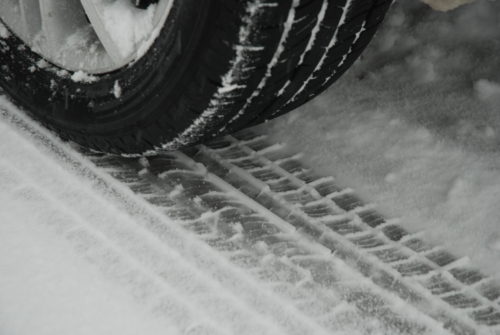Are Studded Tires Necessary For Winter?
November 22, 2016
Winter Tires

Not long ago, studded tires were the choice for safer winter driving. However, technological advances in the tire world have resulted in studless winter tires that sometimes out-perform their studded counterparts. Are studded tires still necessary for winter? We’ll compare studded vs. studless tires in some common winter driving scenarios.
Studded Tires vs. Studless Tires: Road Noise
Although any winter tire is going to result in increased road noise on dry, clear roads, studded tires are much louder than studless tires in these conditions. When the metal studs have no ice or snow to bite into, they end up chewing the road—which is both noisy and damaging to both the road and the tire. This is the reason why most provinces have banned the use of studded tires between May and October (exact dates vary by province).
Studded Tires vs. Studless Tires: Tire Life
Regardless of whether you choose studded or studless tires, winter tires in general tend to have a shorter life than summer tires. No wonder—we put them through a lot in the course of a Canadian winter! Both types of tire will offer reduce performance as they wear down.
The studs in studded tires are designed to wear at more or less the same rate as the tread to ensure even performance. With studless tires, you may see reduced performance after a couple of seasons as the softer, more flexible rubber compound wears away and harder underlying compounds are surfaced.
Although the lifespan of a tire is subject to the quality of its construction and the amount of care you put into maintaining them, neither studded nor studless tires have a great general advantage over the other in terms of lifespan.
Studded Tires vs. Studless Tires: Driving In Snow
It used to be that studded tires were the only way to achieve excellent traction in snow. Now, advanced tire tread designs can provide the same level of traction in snow as a stud. Sipe design is a huge factor in providing snow traction—zig-zag sipes can provide excellent grip by biting into snow the same way studs do. Advanced rubber compounds also help give you greater grip when driving in snow, and are more flexible in cold temperatures versus traditional studded tires.
Modern studless tires are excellent at keeping you safe and maintaining traction and control in snow. When driving on tightly packed snow, however, studded tires have an advantage.
Studded Tires vs. Studless Tires: Driving On Ice
If you often drive on icy streets or tightly packed snow, studded tires are still the way to go. While modern studless tires are excellent in a range of winter driving conditions, you can’t beat the bite of metal studs on wet ice or hard-packed snow.
Studded Tires vs. Studless Tires: Driving In Unpredictable Weather
This is one area in which studless tires clearly excel. Canadian weather can be unpredictable—it may be 15°C and raining on Christmas Day, and we may get hit with a surprise blizzard in late April or early May. Since studded tires are damaged by (and cause damage to) bare roads, rapidly changing weather conditions may lead you to choose a studless winter tire, which offers a much quieter and less damaging ride on clear pavement.
Find Studded Or Studless Tires At Your Local TIRECRAFT Dealer
Once you’ve decided which tire is right for you—or if you need expert advice to make your final decision—your local TIRECRAFT dealer can help. Click here to find the Aircraft dealer nearest you!
Back

